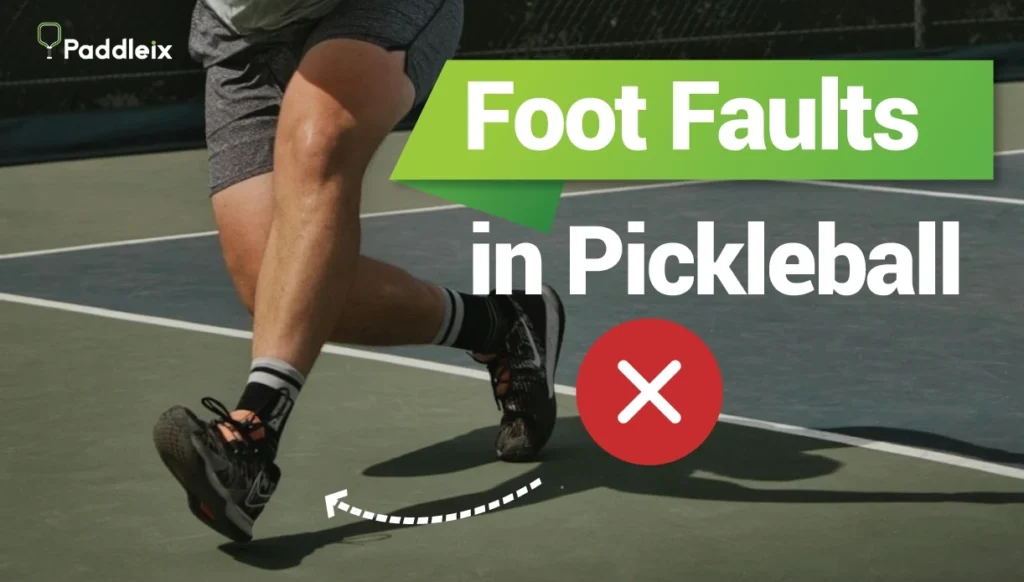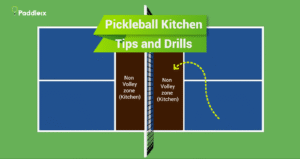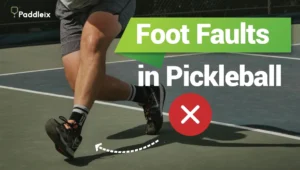You’re in the middle of an epic rally, ready to win the point, when you hear, “Fault!” You look down—your foot’s over the line or, worse, in the kitchen. Foot fault! If this sounds familiar, don’t worry—you’re not alone.
I’ve been there too, thinking I nailed the shot, only to realize my feet broke the rules.
Foot faults are sneaky but totally avoidable. Once you understand the basics, you can easily dodge them.
In this quick guide, we’ll dive into what a foot fault is in pickleball and how to avoid it. Let’s step up our game!
What Exactly is a Foot Faults in Pickleball?
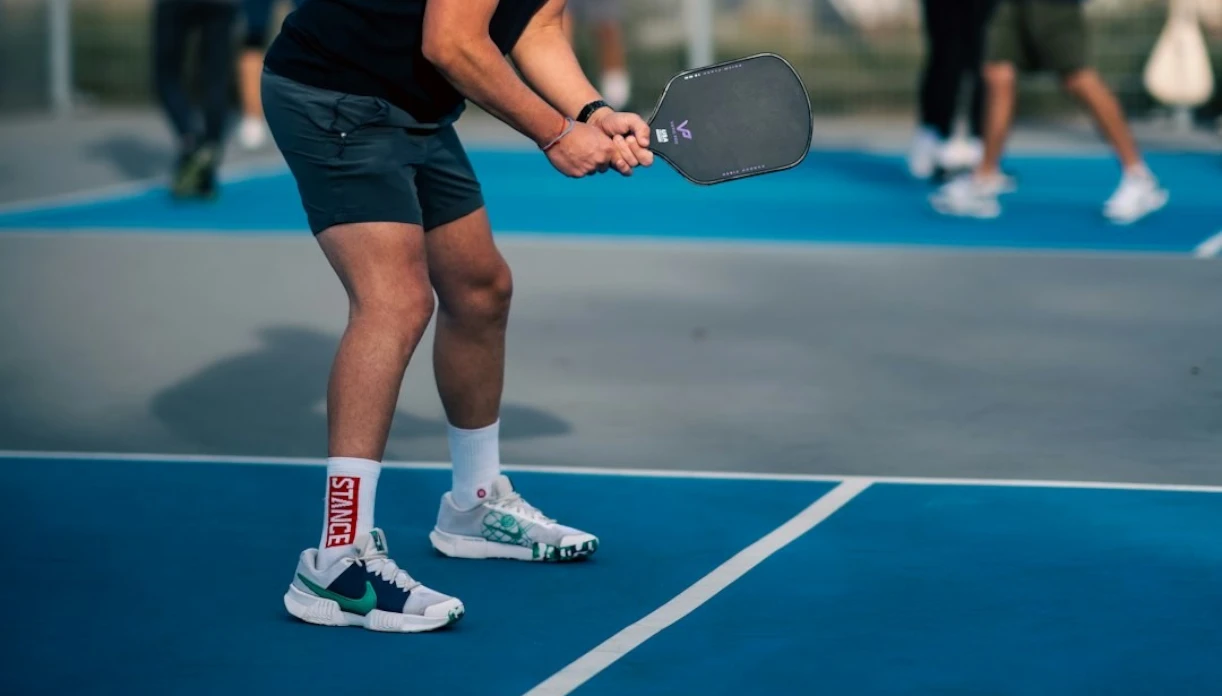
Alright, let’s keep this simple: A foot fault in pickleball happens when your feet wander into places they shouldn’t be, either during your serve or while volleying near the net. It might sound minor, but it can cost you a point or even a game if you’re not careful.
There are two main times foot faults like to sneak up on you:
- During the Serve: If your feet don’t stay behind the baseline or within the sidelines when you serve, it’s a fault. No freebies here—one wrong step, and it’s game over for that point.
- In the Kitchen (Non-Volley Zone): If you step into the kitchen while volleying (hitting the ball before it bounces), that’s also a fault. Yep, the kitchen is off-limits for volleys. Keep your toes out, and you’re golden!
Let’s break these down so you can keep your feet in check and avoid any unexpected “Oops!” moments on the court.
Foot Faults During the Serve
The serve is where the game begins, and it’s your chance to take control of the point. But it’s also one of the most common places players slip up (pun intended!). Here’s what you need to know to keep your serves legal:
- Both Feet Behind the Baseline: This one’s crucial. When serving, both of your feet need to stay behind the baseline until the ball leaves your paddle. If even a toe touches the line, it’s a foot fault. So, no line-hopping, okay?
- Stay Inside the Invisible Lines: Picture two imaginary lines extending from the sideline and centerline past the baseline. Your feet need to stay within this space. If you step outside those invisible boundaries or on them, it’s a foot fault.
- No Jumping: You’ve got to keep at least one foot grounded when you make contact with the ball. Jump serves may look cool, but in pickleball, they’re a one-way ticket to a fault.
Pro Tip: Give yourself a little extra space by stepping a few inches back from the baseline before you serve. It’ll help you avoid stepping on the line and give you peace of mind!
Foot Faults at the Kitchen Line (Non-Volley Zone)
Ah, the kitchen. Also known as the “Non-Volley Zone,” it’s the trickiest area on the pickleball court for your feet. Why? Because when you’re volleying (hitting the ball in mid-air), your feet have to stay behind the kitchen line. Step in, and it’s a fault—every time.
Here’s how to stay kitchen-savvy:
- No Stepping in the Kitchen During a Volley: This is the golden rule. When you hit a volley, your feet must stay behind the kitchen line. If any part of your foot is touching that line, it’s an instant fault. No exceptions.
- Momentum is Your Enemy: Imagine you just nailed a powerful volley but your body keeps moving, and—oops!—you step into the kitchen. Fault. Even if your shot was perfect, it won’t count if your foot crosses the line after hitting the ball. Balance and control are key here.
Pro Tip: When you’re up at the net, keep your weight balanced. Don’t lean too far forward after hitting the ball—it’ll help you stay out of the kitchen and keep the rally alive!
Real-Life Example: Foot Fault During a Serve
Imagine you’re serving in a doubles match. As you swing to hit the ball, your foot touches the baseline right before contact. That’s a foot fault! Even if your serve was great, the point is lost because your foot crossed the line.
Avoid It: Stand a few inches behind the baseline before serving, so you don’t accidentally step on the line.
Real-Life Example: Foot Fault in the Kitchen (Non-Volley Zone)
You’re at the net, volleying a fast shot mid-air. After hitting it, your foot lands in the kitchen. That’s another foot fault—you can’t step into the kitchen after a volley.
Avoid It: Practice balance and control at the net to keep your feet behind the kitchen line during volleys.
Common Foot Fault Mistakes and How to Avoid Them
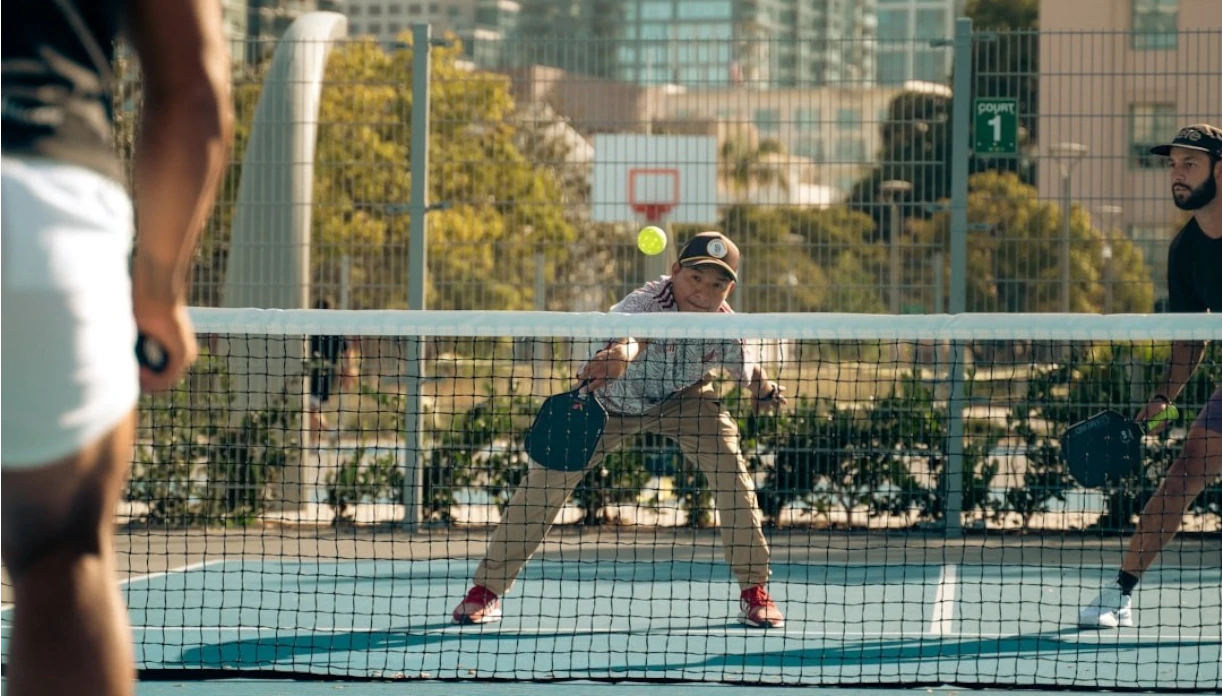
We’ve all made these mistakes, but once you spot them, they’re easy to avoid. Here are the most common foot fault blunders and how to stay clear of them:
- Standing Too Close on the Serve: Many players stand right on the baseline when serving, which makes it way too easy to step over the line. Solution? Step back a few inches. It gives you some buffer room and reduces your chances of foot faults.
- Rushing the Net: Charging toward the net too quickly can lead to accidental foot faults in the kitchen. Be patient and wait for the right moment. Remember, if you’re going to hit a volley, keep those toes behind the kitchen line!
- Forgetting About the Invisible Sidelines: While serving, many players forget that stepping outside those imaginary boundary lines extending from the sideline and centerline is a fault. Stay inside the lines and avoid that error!
- Not Controlling Your Momentum: You’re so pumped after hitting a great shot that you take a few extra steps forward—right into the kitchen. Even after making contact with the ball, you need to keep your feet out of the kitchen to avoid this common mistake.
Tips to Avoid Foot Faults Like a Pro
Mastering footwork is crucial to avoiding foot faults, so here are a few quick tips to help you get there:
- Practice Foot Placement: Set up cones or markers along the baseline and kitchen line to practice staying in bounds. Repetition builds muscle memory, and soon you won’t even have to think about it!
- Keep a Balanced Stance: Good balance helps you stay steady and in control, especially when volleying. Try to keep your knees slightly bent and your weight evenly distributed—this way, you’re less likely to lose control and step into the kitchen.
- Watch Your Opponent’s Feet: Foot faults aren’t just something to watch for on your side. Keep an eye on your opponents too. If they commit a foot fault, don’t hesitate to call it out (nicely, of course!).
- Stay Mindful: Sometimes, just taking a second to check your foot placement before you serve or volley can make all the difference. A quick mental reminder can save you from a costly mistake.
Final Thoughts: Stay One Step Ahead
Foot faults might seem like minor infractions, but they can have a big impact on the game. Mastering your foot placement and staying in control of your movement is a game-changer. With these tips, you’ll be dodging foot faults left and right—and having more fun on the court!
So next time you’re serving or charging the net, remember to keep those feet in check. Stay sharp, stay balanced, and keep winning those points!
Now, grab your paddle and show those foot faults who’s boss. See you on the court—foot fault free!
Quick FAQs About Foot Faults in Pickleball
What exactly is a foot fault in pickleball?
A foot fault happens when your feet are in the wrong place while serving or volleying. Common foot faults include stepping on the baseline during a serve or stepping into the kitchen while volleying.
Can I jump while serving in pickleball?
No, at least one foot must be in contact with the ground behind the baseline during your serve. Jumping while serving is considered a fault.
What happens if I step into the kitchen during a volley?
If you step into the kitchen while volleying, it’s a fault. Your feet must stay out of the non-volley zone during volleys.
How do I avoid foot faults while serving?
Step back from the baseline before serving to give yourself extra room, and stay inside the sideline and centerline boundaries to avoid common serving foot faults.
Can I move into the kitchen after hitting a volley?
No, even after hitting the volley, your momentum cannot carry you into the kitchen. If it does, it’s a foot fault.

